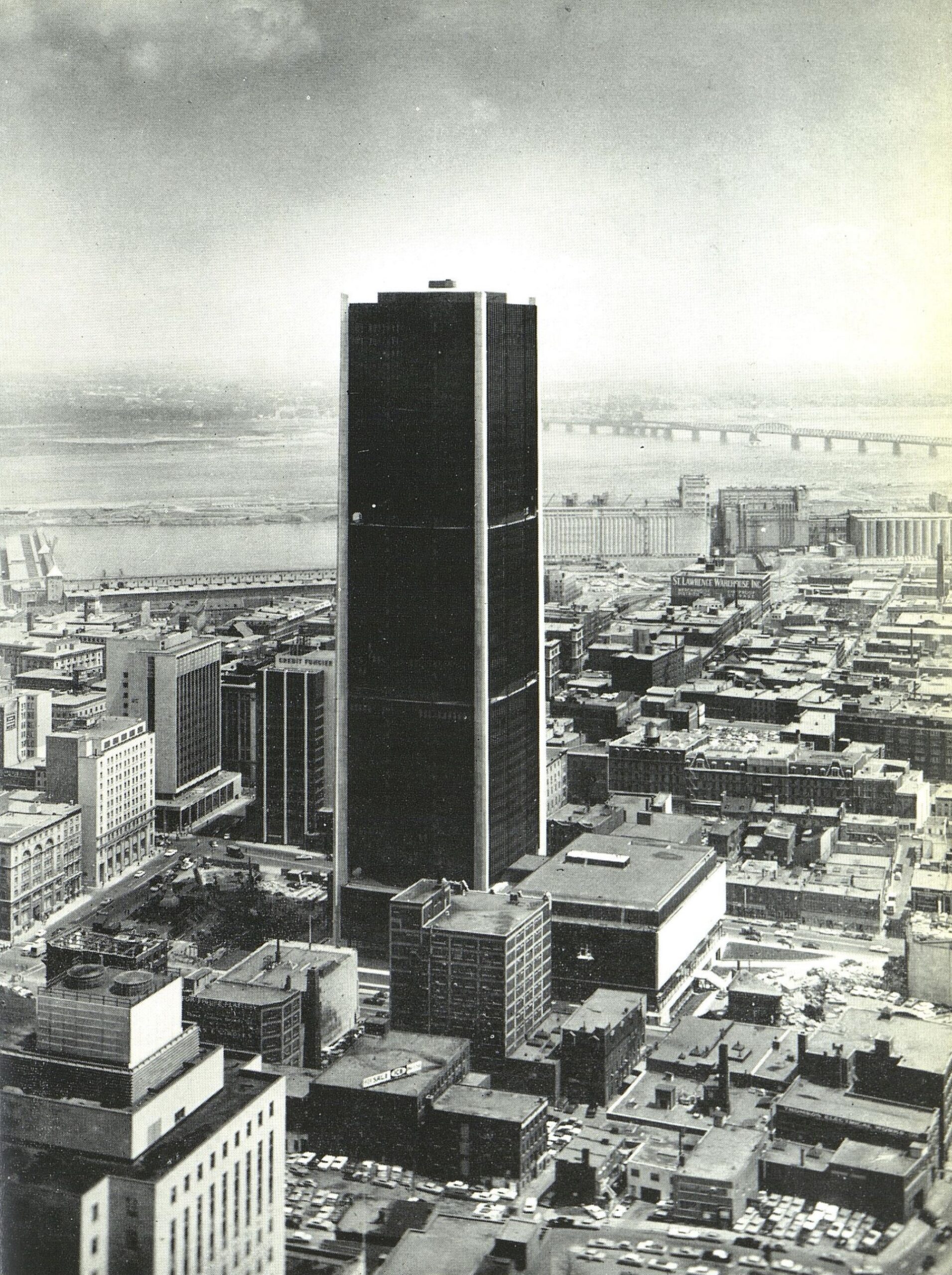
The Skyscraper Museum continued its lecture series In Situ: The Modern Concrete Skyscraper, which examines key experiments in concrete construction and the range of paradigmatic concrete skyscrapers throughout history, in preparation for our exhibition of the same name.
The collaborations between architects and engineers that has been the focus of this series, as well as the contrast between the American and European innovators in concrete, Fazlur Khan and Pier Luigu Nervi, were further explored in a case study by architectural historian Katie Filek.
In 1965, the 47-story and 623ft/190m Place Victoria in Montreal’s financial district, also known as the Stock Exchange Tower or Tour de la Bourse, surpassed Chicago's 1000 Lake Shore Plaza as the world's tallest concrete skyscraper. Designed and built from 1960-1965 by Italian architect Luigi Moretti and Italian structural engineer Pier Luigi Nervi, along with a team of professionals based in both Montreal and in Italy, the project brought together expertise from both sides of the Atlantic. In her talk, based on research for her dissertation, Filek detailed the use of concrete in the tower and discussed how the project was the product of both highly localized conditions of costs, materials, and labour in Montreal and of specialized knowledge held not only by the Italian designers, but also by Montreal-based architects and engineers.
After her presentation, Filek was joined in conversation by architect and historian Thomas Leslie, Professor of Architecture at University of Illinois Urbana-Champaign and co-curator of the exhibition and lecture series The Modern Concrete Skyscraper.
Katie Filek
Katie Filek is a Ph.D. Candidate in the John H. Daniels Faculty of Architecture, Landscape, and Design at the University of Toronto. Her research examines transnational histories of twentieth-century architecture, with a particular focus on technology, costs, and the circulation of architectural knowledge in the context of mid-century Canada. She has worked in architecture studios in Italy, Austria, and France and is co-editor of As Found Editions, a publishing project based on architectural texts and their translations.
After a brief introduction by Director Carol Willis, Katie Filek explored Place Victoria in an illustrated talk of about 35 minutes. She is then joined in dialogue with Tom Leslie.